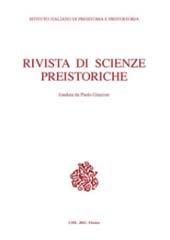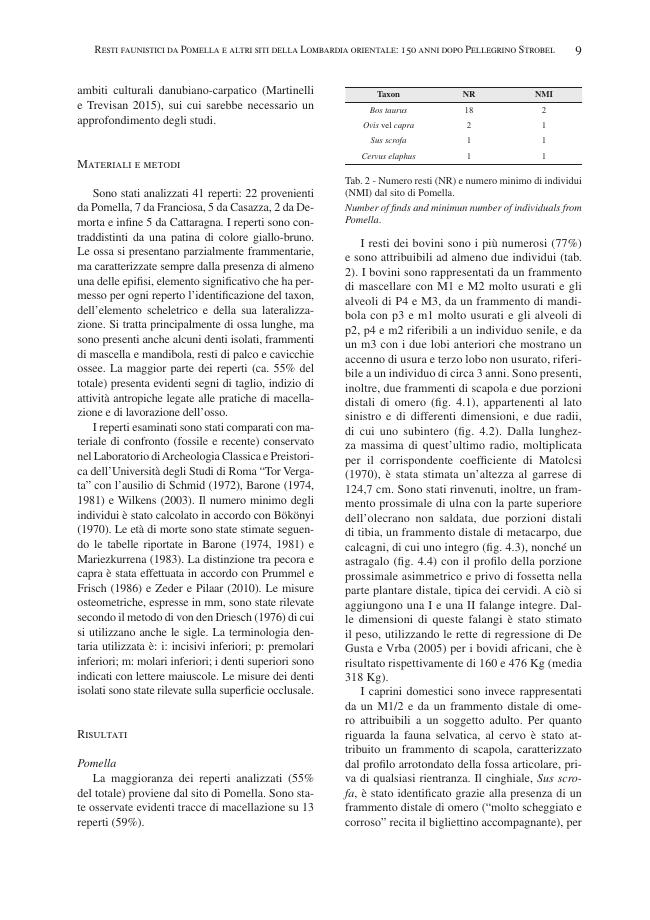Resti faunistici da Pomella e altri siti della Lombardia orientale : 150 anni dopo Pellegrino Strobel
P. 1-17
In the second half of the nineteenth century Pellegrino Strobel was one of the most important Italian palaethnologist; he stood out also for the attention given to the bioarchaeological materials, especially to the faunal remains, and established prominent collaborations with the coeval Mantuan scholars. Archival research led to identify a modest collection of faunal remains housed in the Museum of Palazzo Ducale in Mantua, examined by Strobel, but never published. The osteological finds come from some terramare and piledwellings located in the eastern Lombardy: Pomella, Franciosa, Casazza, Demorta and Cattaragna. According to the published works and from recent research on pottery finds preserved in the above-mentioned Museum, the archaeological sites belong to the Bronze Age.
The anatomical and taxonomical attributions carried out by the eminent scholar on the aforementioned faunal remains are re-examined and updated. The following species have been recognised: Sus scrofa, S. domesticus, Cervus elaphus, Bos taurus, Ovis aries and Capra hircus. Most of the remains belong to domestic animals. B. taurus is the taxon better represented, especially in Pomella, it is characterised by the great number of the analysed remains and its dimensions are among the largest of the coeval cattle in northern Italy. Sheep and goats are rare, and pig is represented by a single bone. Deer hunting was practiced in this geographical area, mainly documented in Franciosa, aimed not only for food purposes, but also for the manufacturing of bone artefacts. [Publisher's text]
Forma parte de
Rivista di scienze preistoriche : LXXI, 2021-
Artículos del mismo número (disponibles individualmente)
-
Información
Código DOI: 10.32097/1148
ISSN: 2282-457X
KEYWORDS
- Italia Settentrionale, Età del Bronzo, Archeozoologia, Storia della Paletnologia
- Northern Italy, Bronze Age, Archaeozoology, History of Palaethnology



